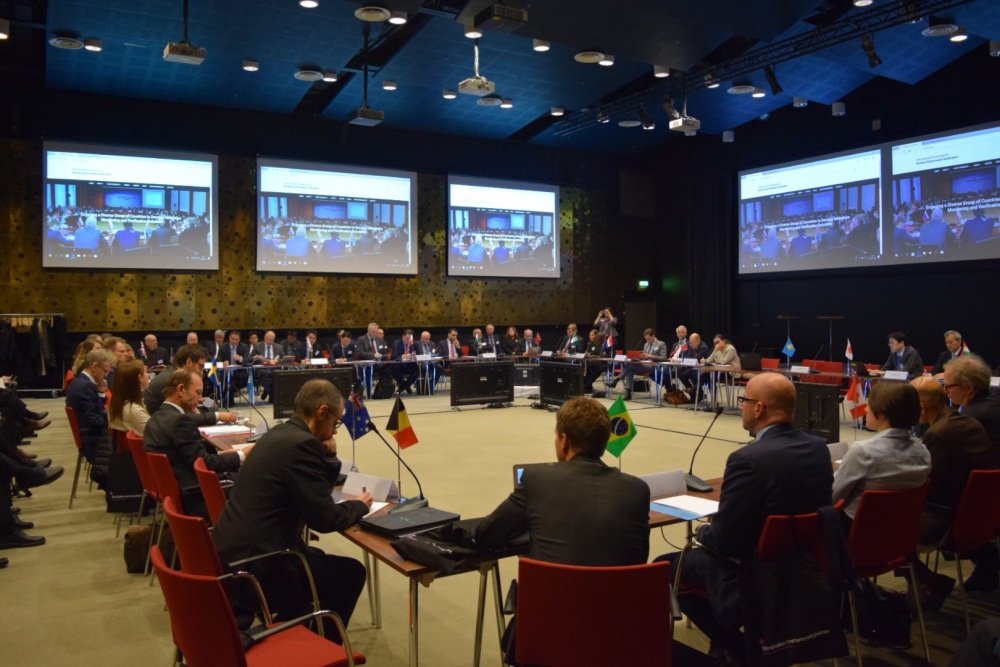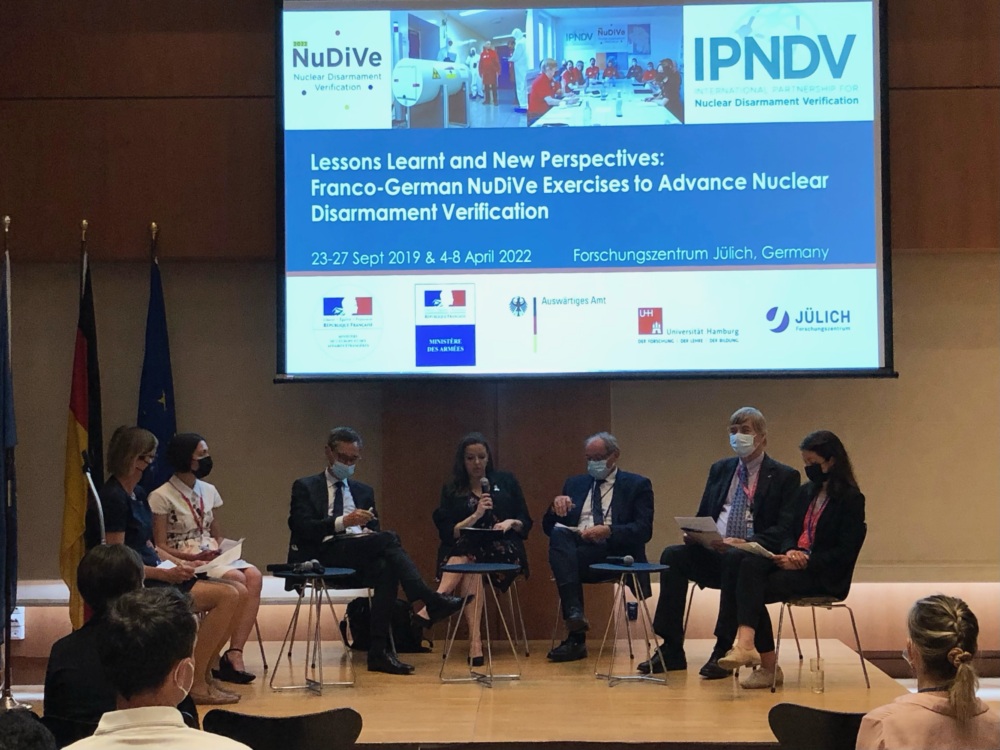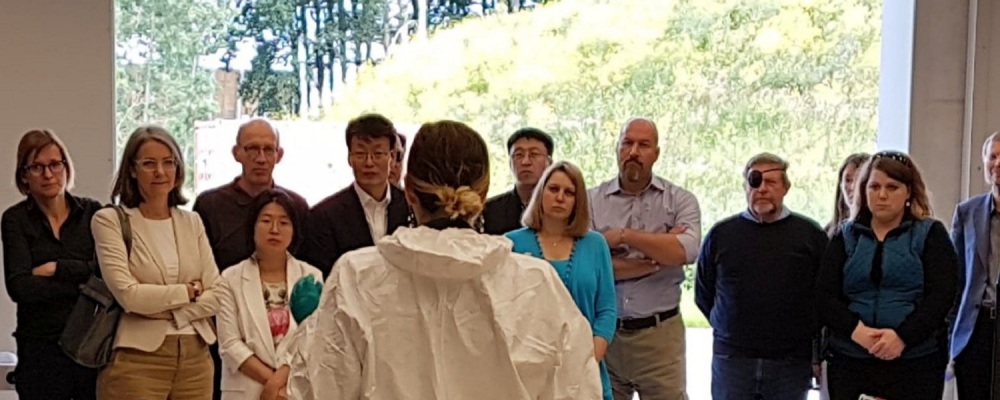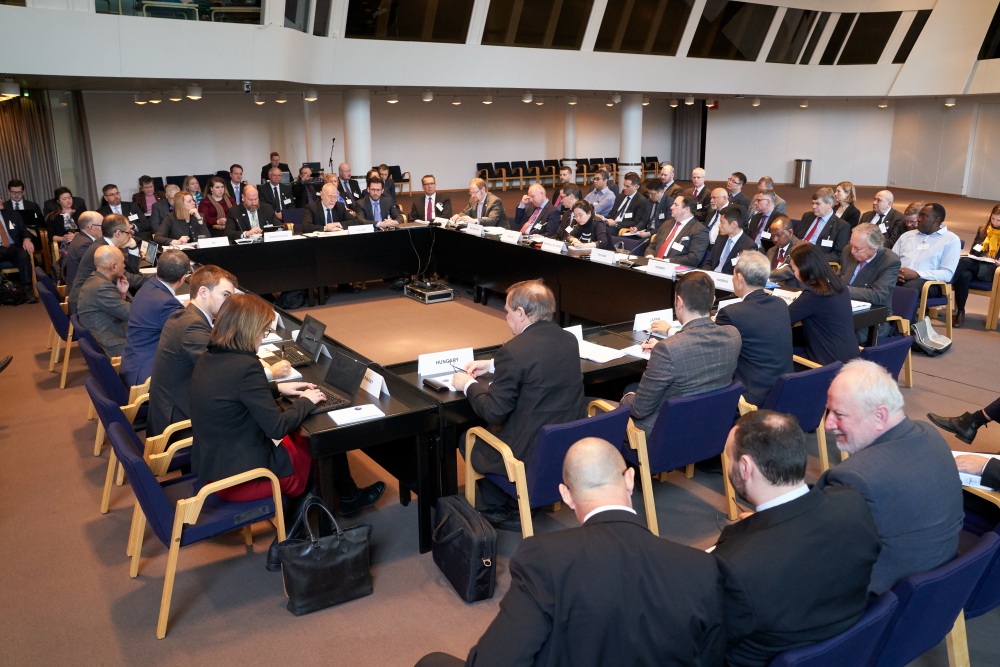
Rachel Staley Grant
Deputy Vice President, Communications
Atomic Pulse
Embarking on
their second multi-year phase, the three working groups of the International Partnership for Nuclear Disarmament Verification (IPNDV), came together in March for a Phase
II kickoff meeting in Stockholm to build on the Partnership’s Phase I work identifying
potential procedures and technologies that can be used in the dismantlement of
a nuclear weapon.
David
Chambers, Rob Floyd, and Jens Wirstam are three of six co-chairs of the three
technical working groups:
Technical
working groups were established for both Phase I and Phase II to steer and facilitate the work
done by the more than 25 countries with and without nuclear weapons that
participate in the IPNDV, a unique public-private partnership between NTI and
the U.S. Department of State to tackle challenges associated with verifying and
monitoring nuclear disarmament.
I caught up
David, Rob, and Jens during the Stockholm meeting and asked about the work
underway and what lies ahead.
How did your working group kickoff Phase II?
David: Working Group 4 (WG4) had an excellent start
to Phase II in Stockholm, with a vibrant and thought-provoking range of
discussion. WG4 will be looking at the role, objectives and verification of
warhead baseline declarations. To do this, we began by addressing the role of
declarations of nuclear weapons in disarmament more broadly to understand the
importance, requirements, and sequencing of such declarations in relation to
agreements to limit, reduce, and eventually eliminate nuclear weapons. We also
started to examine lessons on declarations from other regimes, including those
from the Chemical Weapons Convention (CWC), the Treaty on Conventional Armed
Forces in Europe (CFE), and the Strategic Arms Reduction Treaty (START) family
of Treaties.
Rob: Working Group 5 (WG5) focused
on deciding how to tackle a systematic analysis of verification requirements
across each of the 14-steps
required to dismantle a nuclear weapon.
The steps begin with removal of a weapon from its delivery vehicle at a
deployment site and end with nuclear material from weapons being brought under
regular non-proliferation safeguards or made practicably irrecoverable.
Jens: Working Group 6 (WG6)
focuses on the technologies that can be applied to the various steps and
procedures. In Stockholm, our experts gave presentations on technologies, many
of which already exist in other contexts outside of nuclear disarmament but
could potentially be adapted for this type of work. We also continued other technical discussions
and our work on developing a “toolbox” of potentially applicable technologies
at each of the 14-steps.
What are the plans for your working group in
Phase II?
David: As we go forward in Phase II, WG4 will
continue to explore key elements, concepts, and methodologies from previous
regimes to see what may be relevant to include in nuclear weapon declarations,
as well as how to verify them. To help understand what we may include in
declarations of the weapons themselves—as well as the locations they are in—we
have studied the existing literature on descriptors, categories, and types of
nuclear weapons to see what is useful to declare and that can be verified. We
have also looked at historical weapons facilities to understand what kinds of sites
inspectors may be required to visit and what challenges they may face once they
are there.
Rob: WG5 will map
verification objectives, processes, and techniques for the 14-steps. Our group
will also consider the challenges that need to be overcome for inspectors to be
satisfied that declared actions have taken place and that there has been no
diversion or substitution of nuclear weapons or their components. The group
will also consider how the results of inspection should support assessments of
compliance with a verification agreement.
Jens: WG6 will focus on identifying technologies that could potentially be
applied at steps 1-5, when the nuclear warhead is removed from the deployed
delivery systems and placed into long-term storage, and 11-14, when the fissile
material and the high explosives are separated after dismantlement and are
disposed of. The Partnership addressed steps 6-10
during Phase I. Our working group members will prepare papers and presentations
that will help us consider different classes of technologies, such as those
that support chain of custody and those that detect radiation, that can be used
across the steps.
Is there something specific your group is
looking forward to in Phase II?
David: WG4 members are looking forward to building on
what has been done in the past and to providing a greater understanding of
nuclear weapon declarations as well as practical insights into how such
baseline declarations can be verified.
Rob: Coordination with WG6 on the technologies required for on-site
inspection will be particularly important to us in Phase II. WG5 members also
welcome the interest of IPNDV participants to plan and conduct exercises in
Phase II, and they look forward to assisting with preparation.
Jens: WG6 members are looking forward to coordinating with and
incorporating input from other working groups throughout Phase II.
Read more about the IPNDV working groups here. The next joint working group
meeting of the IPNDV will be hosted in South Korea in July 2018.
A
version of this article was also published on www.ipndv.org.
Sign up for our newsletter to get the latest on nuclear and biological threats.
Diplomats and experts who met in New York last month to review implementation of the Treaty on the Nonproliferation of Nuclear Weapons (NPT) had an opportunity to learn more about a groundbreaking partnership working to pave the way for future progress on the reduction and elimination of nuclear weapons.
IPNDV Prepares for Nuclear Disarmament Verification Exercises
New IPNDV Partner Countries Build Understanding, Bring Diverse Perspectives to Verification Challenges



